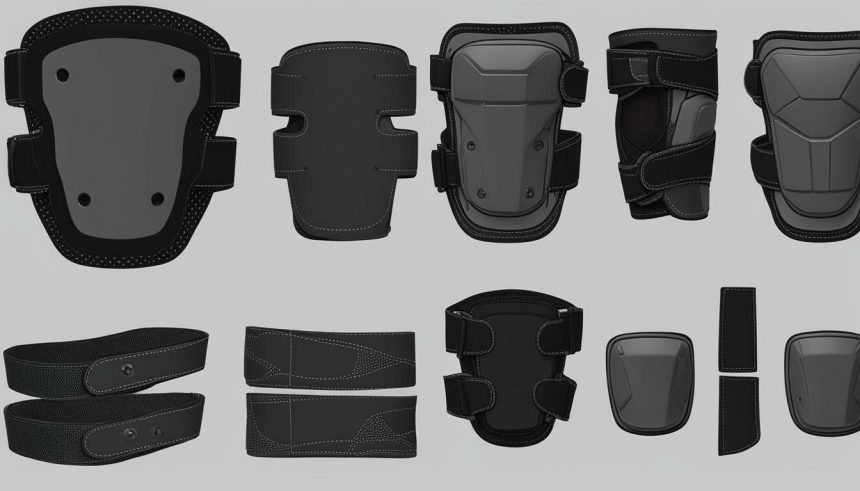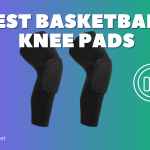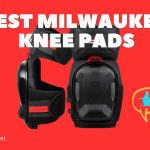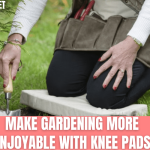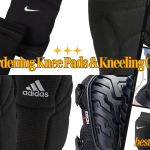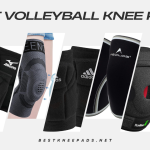Protecting your knees is essential for anyone who participates in activities that put them at risk of injury. Whether you’re a seasoned athlete or a weekend warrior, wearing knee pads is a smart decision. Crafting your own knee pads is not only a fun and rewarding DIY project but also ensures a perfect fit tailored to your individual needs. In this guide, we’ll take you through the step-by-step process of making your own knee pads, from gathering materials to testing their functionality.
Key Takeaways:
- Making your own knee pads ensures a custom fit for maximum protection and comfort.
- Crafting knee pads is a fun and rewarding DIY project.
- Knee pads are essential for anyone participating in activities that put strain on the knees.
Why Make Your Own Knee Pads
There are several benefits to crafting your own knee pads. Firstly, you can ensure a custom fit that is tailored to your specific needs. Everyone’s knees are unique, and store-bought knee pads may not provide the best fit for you. By creating your own knee pads, you can take precise measurements and make adjustments to create a perfect fit, ensuring maximum comfort and protection.
Additionally, making your own knee pads can be an enjoyable and rewarding craft project. Not only do you get to create something practical and useful, but you also get to exercise your creativity and design skills. Furthermore, by making knee pads yourself, you can save money compared to buying expensive store-bought options.
Overall, the benefits of homemade knee pads include a custom fit that maximizes protection and comfort, the opportunity for a fun and rewarding craft project, and potential cost savings compared to store-bought options.
Section 3: Gathering Materials and Tools
Before embarking on your knee pad making journey, it’s important to have the right materials and tools at your disposal. Here’s a comprehensive list of items you’ll need:
Knee Pad Materials
- Fabric: Choose a durable, breathable fabric like neoprene, canvas, or denim. You’ll need enough to create two knee pad pieces, plus extra for additional padding if desired.
- Interfacing: This material will provide added stability and structure to your knee pads.
- Elastic: You’ll need a length of elastic to create the straps that secure your knee pads in place.
- Thread: Choose a thread that matches your fabric for a seamless finish.
- Padding Material: Depending on your preferences, you may want to add additional padding to your knee pads. Foam inserts or batting are good options.
DIY Knee Pad Supplies
- Scissors: You’ll need a pair of sharp scissors to cut your fabric and padding material.
- Measuring Tape: Measure your knees to ensure a proper fit for your knee pads.
- Sewing Machine: A sewing machine makes the process faster and easier, but you can sew by hand if necessary.
- Sewing Needles: Make sure you have needles that are appropriate for your fabric.
- Straight Pins: These are useful for keeping your fabric in place while sewing.
- Iron: An iron will help you create crisp folds in your fabric and stabilize your seams.
- Ironing Board: A sturdy ironing board is essential for ironing your fabric and interfacing.
By gathering all these materials and tools beforehand, you can make the knee pad making process smoother and less stressful.
Designing Your Knee Pads
Now that you have a good understanding of why making your own knee pads is a great idea and have gathered your materials and tools, it’s time to start designing your knee pads. When it comes to knee pad design, your options are endless. You can choose from a vast array of shapes, sizes, and styles to create knee pads that are not only functional but also fashionable.
To help you get started, we have provided downloadable patterns and templates that you can use as a guide. These templates are customizable, allowing you to adjust the size and shape to fit your unique needs and preferences. Additionally, you can choose to add extra features, such as adjustable straps or extra padding, to further enhance the functionality of your knee pads.
When designing your knee pads, it’s important to consider the purpose of the knee pads. If you’ll be using them for high-impact activities, such as skateboarding or rollerblading, you may want to opt for a larger size and thicker padding. Alternatively, if you’ll be wearing them for yoga or gardening, a smaller and sleeker design may be more appropriate.
Another factor to consider is the type of fabric you’ll be using for your knee pads. You’ll want to choose a fabric that is both durable and comfortable against your skin. Additionally, the fabric should be able to withstand repeated use and washing without losing its shape or integrity.
Overall, designing your knee pads is a fun and creative process that allows you to customize your knee protection to your unique needs. By using our templates and considering your specific requirements, you can create knee pads that not only provide essential protection but also reflect your personal style and taste.
Step-by-Step Construction Process
Now that you have all the necessary materials and have designed your knee pads, it’s time to start constructing them. Follow these step-by-step instructions to create your own customized knee pads:
Cut the Fabric
Start by cutting two pieces of your chosen fabric to the size and shape of your knee pads. Use your knee pad template or pattern as a guide to ensure the pieces are the correct size and shape.
Stitch the Knee Pads
Lay the two pieces of fabric on top of each other with the right sides facing each other. Use a sewing machine or needle and thread to stitch around the edges, leaving a small gap for turning the fabric right side out. Turn the fabric right side out and use a small amount of fabric glue to close the gap.
Add Padding
If you want to add padding to your knee pads, now is the time to do so. Cut foam inserts to fit the size and shape of your knee pads and insert them between the fabric layers. Use fabric glue to hold the foam in place.
Attach Straps
To ensure the knee pads stay in place, attach sturdy straps to them. Cut two strips of elastic or webbing to the correct length and stitch them to the top and bottom of each knee pad.
Ensure the straps are securely attached and that the knee pads fit snugly on your knees. If adjustments need to be made, make them before testing your new knee pads.
Adding Comfort and Padding
When it comes to knee pads, protection is key, but comfort can make all the difference, especially for activities that require prolonged use. Thankfully, adding comfort and padding to your knee pads is a simple process that can greatly enhance your overall experience.
Knee Pad Padding: One of the most essential components of adding comfort to your knee pads is adding padding. Foam inserts are an excellent option as they provide cushioning while still maintaining a low profile. Cut the foam to size and insert it between the outer layer of fabric and the inner liner.
Comfort Features: There are a variety of additional comfort features you can add to your knee pads, depending on your specific needs. For example, breathable mesh fabric can help keep your knees cool during extended use, while adjustable straps allow for customizable fit. Additionally, some knee pads come with gel inserts or extra padding, providing even more cushioning for maximum comfort.
Not Just for Protection
Adding comfort features to your knee pads isn’t just about enhancing protection – it’s also about making sure you can perform at your best without distraction or discomfort. By taking the time to add padding and other comfort features, you can stay focused on your activities, whether it’s playing sports, working in a trade, or exploring the great outdoors.
Testing and Adjustments
Once you’ve completed the construction of your knee pads, it’s important to perform a few tests to ensure they fit properly and provide the necessary protection. Start by putting on the knee pads and testing them in a comfortable kneeling position. Make sure they cover your kneecap and surrounding area, and adjust the straps if necessary to ensure a snug fit that doesn’t restrict movement or circulation.
Next, move around and try different motions that are typical of the activities in which you’ll be using the knee pads. Flex your knees and perform a few squats to see if the knee pads stay in place and provide protection throughout the movement. If there are any areas that feel uncomfortable, adjust the padding or make necessary adjustments to the straps to improve the fit.
Remember that the goal is to achieve a balance between protection and comfort. If the knee pads are uncomfortable, you may be tempted not to wear them, compromising your safety. However, if they don’t provide adequate protection, they may not be doing their job.
Making Adjustments
If you find that your knee pads need adjustments, don’t worry. This is a normal part of the process, and it’s easy to fix minor issues. Try adjusting the straps and padding to see if this improves the fit, and test the knee pads again. If you’re still experiencing discomfort or inadequate protection, consider modifying the design or construction of the knee pads.
Homemade knee pads offer a great advantage in that you can easily make adjustments to suit your specific needs. Don’t be afraid to experiment and try out different solutions until you find the best fit and protection for you.
By following these steps to test and adjust your knee pads, you can ensure that they’ll perform properly and provide the necessary protection when you need it most. So, take the time to properly test and adjust your knee pads, and enjoy your favorite activities with peace of mind.
Conclusion
Making your own knee pads is a fun and rewarding DIY project that not only allows for customization but also ensures proper protection for your knees.
By following the step-by-step instructions outlined in this guide, you’ll be able to craft knee pads that fit perfectly and provide comfort during prolonged use. The materials and tools required are easily accessible, and the design options are endless, allowing you to create knee pads that match your style and unique needs.
Not only will you gain a valuable skill, but you’ll also enjoy the peace of mind that comes with knowing your knees are well-protected. So, whether you’re an athlete, a DIY enthusiast, or simply looking to protect your knees during daily activities, making your own knee pads is an excellent choice.
Start crafting your homemade knee pads today, and enjoy the benefits of DIY knee protection.
